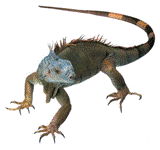Papers in the Biological Sciences

Papers in Herpetology
Document Type
Article
Date of this Version
2025
Citation
Reptiles & Amphibians (2025) 32(1): e22370
doi: 10.17161/randa.v32i1.22370
Abstract
We conducted surveys for the Cedar Keys Mole Skink, Plestiodon egregius insularis (Mount), during 1989– 1999 and 2015–2024, examined museum vouchers, and compiled personal observations from others to determine the status and distribution of this subspecies, which has the smallest geographic distribution of the five subspecies and is being considered for federal listing. We observed Cedar Keys Mole Skinks on Airstrip Island, Atsena Otie, Cedar Point, Deer Island, North Key, Scale Key, Seahorse Key, Snake Key, and possibly Dog Island. We have anecdotal reports of Mole Skinks on Way Key, which contains the most potential habitat and is the main island occupied by the City of Cedar Key. We found Mole Skinks along shorelines in tidal wrack and under debris but seldom searched island interiors, which presumably shelter populations from storm surges that periodically scour beaches of refugia. This subspecies, which has been proposed for federal listing as endangered, is primarily threatened by habitat loss from rising sea levels and more frequent and intense storms resulting from climate change.
Included in
Behavior and Ethology Commons, Biodiversity Commons, Evolution Commons, Marine Biology Commons, Other Ecology and Evolutionary Biology Commons, Population Biology Commons, Terrestrial and Aquatic Ecology Commons, Zoology Commons


Comments
Florida State government work